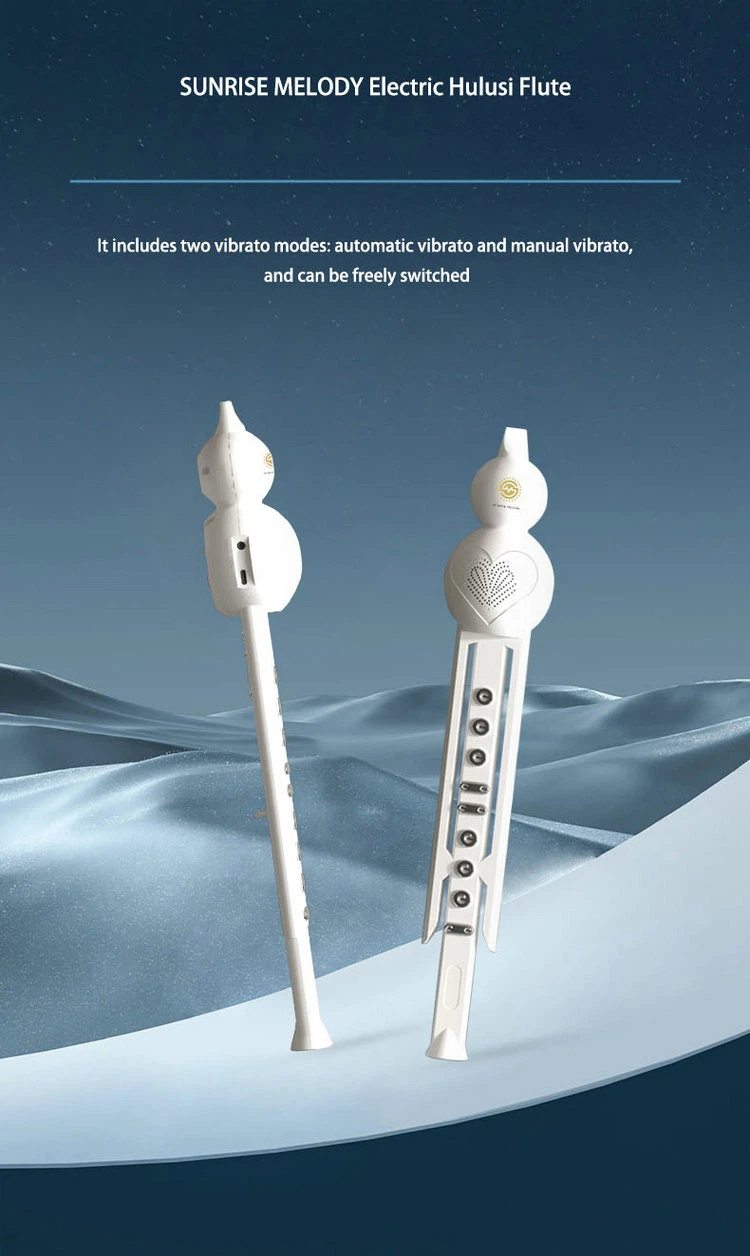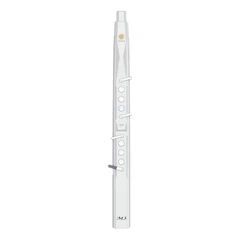How to Play Different Scales on the hulusi flute instrument
The hulusi flute instrument, with its unique charm and musical possibilities, offers the opportunity to explore and master various scales. Playing different scales on the hulusi flute instrument is not only a technical challenge but also an artistic journey that requires a combination of knowledge, practice, and musical sensibility.
To begin with, let's understand the fundamental concept of scales. A scale is a sequence of notes arranged in a specific pattern of intervals. The most common scales are the major scale, minor scale, pentatonic scale, and chromatic scale. Each scale has its own distinct character and emotional impact.
The pentatonic scale, often associated with traditional Chinese music, is a great starting point for beginners on the hulusi flute instrument. It consists of five notes and is relatively straightforward to play. To play the pentatonic scale on the hulusi flute instrument, start by familiarizing yourself with the finger positions for the basic notes. For example, let's assume the scale starts on the note "do". Cover the appropriate finger holes to produce this note and then gradually move to the next note, "re", by uncovering or covering specific holes as per the instrument's fingering chart.
Practice playing the pentatonic scale up and down slowly, focusing on maintaining a smooth and consistent tone. Pay attention to the timing and rhythm of each note. As you become more comfortable, increase the speed and try adding some simple embellishments like trills or slides between the notes.
When moving on to the major scale, which has seven distinct notes, the complexity increases. The major scale is known for its bright and cheerful sound. To play it on the hulusi flute instrument, you need to precisely control your finger movements and breath. Start by identifying the root note and then follow the specific intervals between the successive notes. For instance, if the root note is "C", the next notes in the scale would be "D", "E", "F", "G", "A", and "B".
Practice playing the major scale in different keys to enhance your understanding and dexterity. This will involve changing the starting note and adjusting your finger positions accordingly. Use a metronome to keep a steady tempo as you practice, and gradually increase the speed and complexity of your playing.
The minor scale, on the other hand, has a more melancholic and introspective quality. Playing the minor scale on the hulusi flute instrument requires similar attention to finger placement and breath control. Understand the intervals that distinguish the minor scale from the major one and practice playing it smoothly and accurately.
The chromatic scale, which includes all the twelve notes within an octave, is a challenging but rewarding scale to master on the hulusi flute instrument. To play the chromatic scale, you need to be extremely precise with your finger movements as you'll be covering and uncovering holes in rapid succession. This scale is often used for creating tension and adding chromatic passing notes in a composition.
One important aspect of playing different scales on the hulusi flute instrument is breath control. The force and duration of your breath affect the volume and sustain of each note. When playing scales quickly, it's crucial to manage your breath efficiently to avoid running out of air mid-scale. Practice long, sustained notes to build your breath capacity and then apply this control when playing scales.
Another key factor is fingering accuracy. Make sure your fingers are placed precisely on the finger holes to produce the correct notes. Any slight misalignment can result in an incorrect pitch and disrupt the smooth flow of the scale. Regular finger exercises and warm-ups can improve your dexterity and accuracy.
In addition to these basic scales, there are also modal scales, such as the Dorian, Phrygian, and Lydian modes, which offer unique sonic characteristics. Exploring these modal scales can add depth and variety to your playing.
To further enhance your ability to play different scales on the hulusi flute instrument, listen to a wide range of music that incorporates these scales. Analyze how professional musicians use scales to create different moods and expressions. This will give you a better sense of how to apply the scales in your own playing.
Let's consider a practical example. Suppose you want to play a piece of music that transitions between the major and minor scales. Start by practicing each scale separately until you can play them smoothly and confidently. Then, focus on the transition points, ensuring that the change in scale is seamless and the emotional shift is effectively conveyed through your playing.
Another example could be a composition that features rapid chromatic runs. Break down these runs into smaller sections and practice them slowly at first, concentrating on the finger movements and breath coordination. Gradually increase the speed until you can play the chromatic runs with accuracy and fluidity.
Playing different scales on the hulusi flute instrument is not something that can be mastered overnight. It requires consistent practice, patience, and a passion for music. Set aside dedicated practice time each day and keep challenging yourself with new scales and musical exercises.
In conclusion, playing various scales on the hulusi flute instrument is a fulfilling and rewarding pursuit. It allows you to unlock the instrument's full potential and express a wide range of emotions and musical ideas. With determination, practice, and a love for the hulusi flute instrument, you'll be able to play different scales with ease and artistry, creating beautiful music that resonates with both yourself and your audience.
SUNRISE MELODY Electric hulusi flute instrument
Chinese hulusi flute instrument flute instrument it has a unique ethnic style and is extremely ethnic.
And it has a good volume and 10 timbres, it is easy to learn and simple to use, especially suitable for beginners.
6 Major Core Selling Points, a variety of innovative functions to meet different performance needs:
10 kinds of timbres
Touchable octave
Connect headphones
Four fingerings
Built-in battery
Built-in speakers



